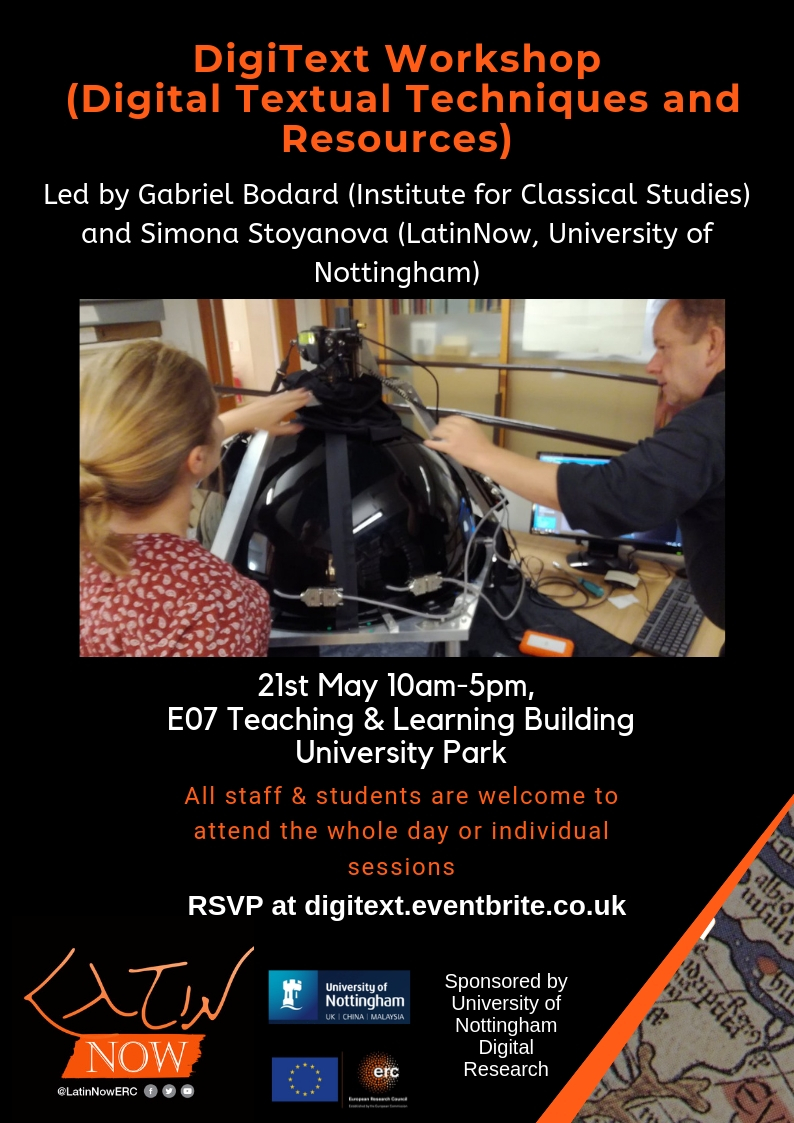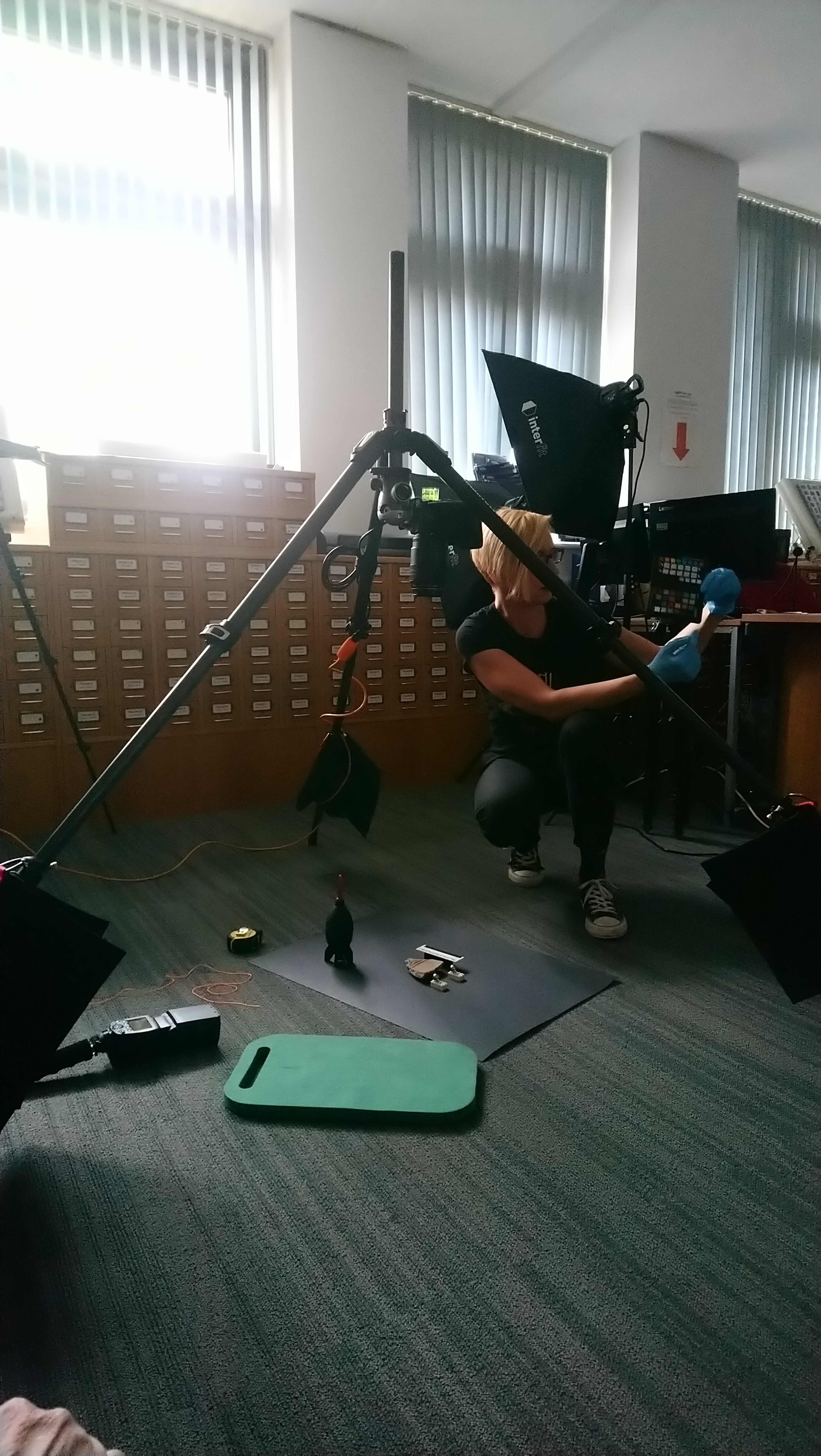By Simona Stoyanova
 The LatinNow summer started with a training session for the Faculty of Arts at the University of Nottingham and our team on Digital techniques and resources for textual research. Led by Dr Gabriel Bodard (Institute for Classical Studies, London) and me, the DigiText workshop introduced our colleagues to four major digital approaches to humanities research: digital philology, text encoding, linked open data and linguistic annotation. The topics we covered included introduction to online resources, imaging techniques for cultural heritage, methods in digital palaeography, EpiDoc XML markup, LOD annotation, treebanking and translation alignment. While most of our examples were taken from the ancient Mediterranean, the principles and practices applied to all disciplines and cultures represented in the audience – from Scandinavian studies to modern languages translation studies. Our colleagues enjoyed a good amount of practice, starting with marking up modern gravestones in EpiDoc (the more errors and erasures the better), annotating and disambiguating place names in Recogito and aligning translations in Ugarit. Our aim was to showcase these major topics and what progress has been made in digital classics, as well as to highlight the applicability of these approaches and methodologies to virtually all textual research. We had fruitful discussions and quite a few ideas for future collaboration, both national and international – watch this space!
The LatinNow summer started with a training session for the Faculty of Arts at the University of Nottingham and our team on Digital techniques and resources for textual research. Led by Dr Gabriel Bodard (Institute for Classical Studies, London) and me, the DigiText workshop introduced our colleagues to four major digital approaches to humanities research: digital philology, text encoding, linked open data and linguistic annotation. The topics we covered included introduction to online resources, imaging techniques for cultural heritage, methods in digital palaeography, EpiDoc XML markup, LOD annotation, treebanking and translation alignment. While most of our examples were taken from the ancient Mediterranean, the principles and practices applied to all disciplines and cultures represented in the audience – from Scandinavian studies to modern languages translation studies. Our colleagues enjoyed a good amount of practice, starting with marking up modern gravestones in EpiDoc (the more errors and erasures the better), annotating and disambiguating place names in Recogito and aligning translations in Ugarit. Our aim was to showcase these major topics and what progress has been made in digital classics, as well as to highlight the applicability of these approaches and methodologies to virtually all textual research. We had fruitful discussions and quite a few ideas for future collaboration, both national and international – watch this space!

Our second trip to Nottingham’s leafy University Park campus was for a training session in Reflectance Transformation Imaging (RTI), led by the fabulous Dr Kathryn Piquette. We were joined by a couple of colleagues all the way from Vindolanda who pulled all the stops with their multispectral filters. In two days we learnt how to put up and dismantle the RTI highlight setup, how not to drop a £2000 camera on a museum object, how to use a transmitter and how to hold one’s hand steady at 60°, 45°, 20° and 15° with no wrist tilting. The training covered the theory and physics behind RTI, followed by lots of practice. On the second day we processed the images we had taken the day before and produced our finished RTI images. The fortuitous incident of a foot just slightly nudging the board holding the object being imaged during one session showcased how/what things could go wrong, what to keep an eye out for and how to attempt fixes. We discussed various image-enhancing techniques and tools, tried one on a newly-imaged tablet from Roman Vindolanda and confirmed the reading of a stamp on a terra sigillata mould sherd from the University of Nottingham Museum collection. It was a whirlwind of a training, we learnt a great deal and are massively grateful to Kathryn!
